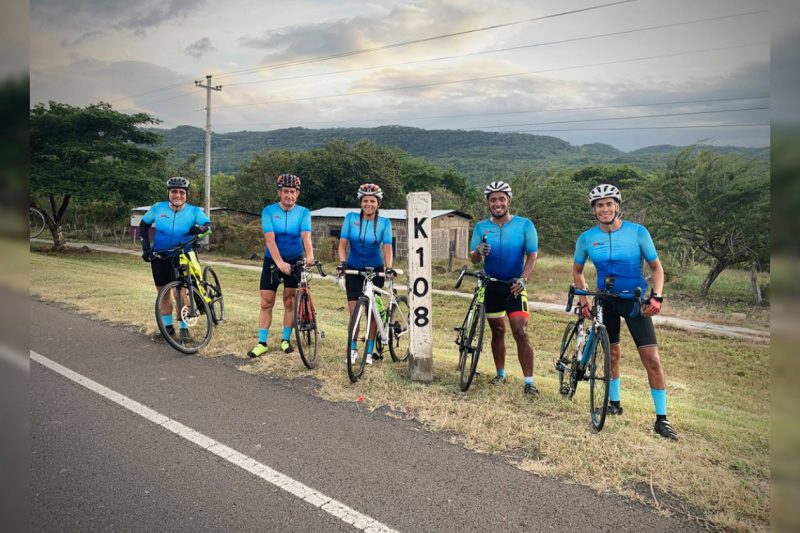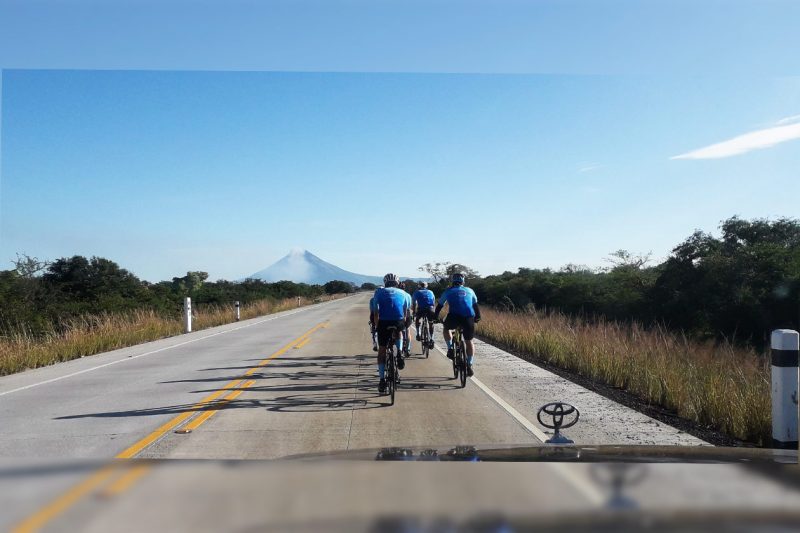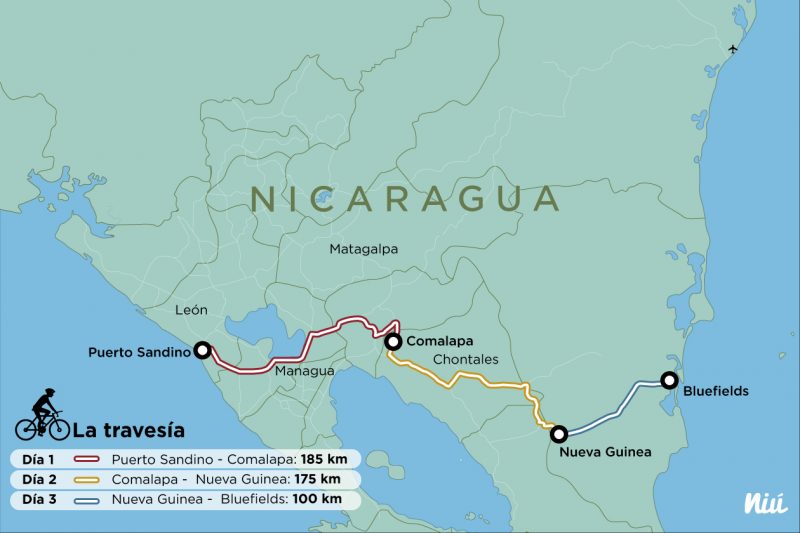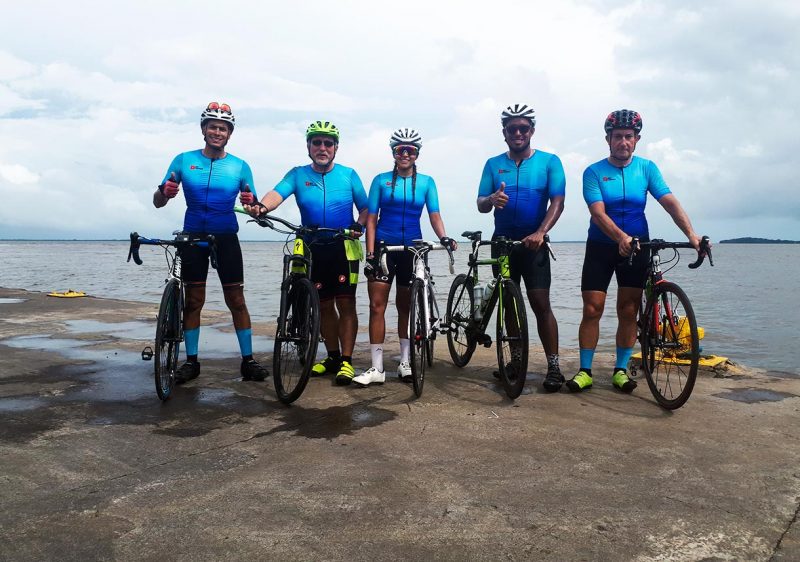The Cyclists Who Crossed Nicaragua in Three Days

A group of five cyclists set out to travel Nicaragua, from the Pacific to the Atlantic, in three days. 460 kilometers later, they tell how they succeeded.
By Keyling T. Romero (Confidencial)
HAVANA TIMES – “It’s only a hundred kilometers more. I’ve got this,” said cyclist Anabell Cruz when she woke up on December 8, 2019. She had already pedaled 360 kilometers over two consecutive days. She had tired legs and, the day before, had to buy an ointment to endure the hours still left, sitting on her bicycle, that she would need to get from Nueva Guinea to Bluefields.
That day, she and four cycling friends planned to end their long weekend on the Atlantic Coast. However, those last hundred kilometers would turn out to be the hardest.
“It was just one hundred kilometers, but they were unknown kilometers. We didn’t know the road. We came across some very daunting hills – the climbs and the descents. That’s where the mental work comes in, because everything you do at that point is psychological. I was already counting the kilometers ten by ten,” confesses Cruz.
The trip began on Friday at seven in the morning in Puerto Sandino, León and the goal was to arrive Sunday at Bluefields. Three months before, they began to discuss how they would make the trip — where they would stay, where they would depart from and their plans given that between New Guinea to Bluefields there is no place to stay, so they would have to make it in one stretch. And they succeeded, arriving at noon that Sunday.

“The most difficult thing wasn’t even the total number of kilometers, because I would say that anyone can do 460 kilometers in 10 days. The hard part is doing it in three days. Even if you get used to doing 100 km per day it is not difficult, but when you pass that barrier, every kilometer is worth about 10 because your body is tired and your metabolism does not work the same as in the first three hours. So, the challenge was not the kilometers, nor the altitude, it was the time we did it in, ”explains Carlos Tercero, who proposed the challenge.
Carlos was the one who encouraged the four cyclists and was really the person who brought them together. Given their shared hobbies and friends in common, they all ended up getting to know each other. Anabell, 28; Donald Vanegas, 35; Álvaro Fuentes, 55, and Emiliano Paleaz, a 58-year-old Spaniard – this last one joining the group after finding them in the groups of cyclists who pedal through Managua on almost a daily basis.
The Nicaragua 800 Challenge
The idea of ??the challenge took shape after the inauguration of the road connecting Managua with Bluefields. Carlos thought it would be a good idea to cross the country from coast to coast and so he initially proposed the trip. The group then decided to add another challenge — pedaling from border to border. The now combined challenges were baptized as Nicaragua 800 — the approximate kilometers between the points.
“At the beginning I didn’t really take it seriously, I said yes, but in reality I was not convinced,” says Fuentes, who is a doctor and also rides four-wheelers. “In fact, I didn’t think I would make it, because one day before I left, I got injured in one of my workouts and had to leave. And I have to confess that, when we left, I had a separate pickup following so that I could go back if I couldn’t make it,” he laughed.
Almost everyone had doubts about making it because it was the first time that they had undertaken such a challenge. Therefore, they began training months ahead to build up their resistance. Each of them trained on their own from Monday to Friday, riding in the mornings, or working out on a stationary bike. On weekends, each one trained from Monday to Friday on their own, doing a stationary bike or pedaling in the morning. And on weekends they trained with cross-country routes, which in cycling jargon means pedaling more than 100 kilometers. That, they say, is the key to withstanding so many hours on a bike.“One of the main things about this challenge is the camaraderie, because it is a tour that you have to do with people you trust. You need a team that says, if we start out together, we finish together, because this is not a competition,” says Anabell.

Challenge Day
They had initially decided to leave from the nearest beach: Masachapa. However, since they use road bikes, they can’t spend too much time on the cement cobblestones used to pave so many of Nicaragua’s roads. They then thought about starting from San Rafael del Sur, but realized that would be particularly difficult given the very steep road. “If you are exhausted from the very start, you won’t make it. And that is a very dangerous road, because there are a lot of trucks, it’s a very narrow road, with a lot of drop-offs. That’s why we decided to start out from Puerto Sandino,” the cyclists said.
Once the route was drawn up, the trip began. It was a total of 460 kilometers, with ascents of 4,720 meters, the equivalent of climbing to El Crucero six times. It was a total of 21 hours pedaling. There are really two times, so to speak — the time of departure and arrival and the time spent pedaling. “During the day we have between 10 and 11 hours of ‘pedalable’ time because at night anything can happen – between the vehicles and not being able to see. If you don’t see a hole, you can get injured,” Carlos explains.
For this reason, they planned the trip for three days, in which they would shoot for approximately seven hours per day of pedaling, leaving room to hydrate, eat and regain their strength. In addition, they were accompanied carried by an escort vehicle to protect them on the road, because that is one of the main dangers.
“On the roads there is no space for cycling. There are people who respect you, but there are others who pass you so closely that you can feel it. A vehicle should be at least a yard and a half away to pass, if a truck tries to pass with less distance than that, the effect pulls you towards the truck and that can cause accidents,” Donald explains.
The Goal

Álvaro Fuentes took his first breath of relief when he began to see the typical wooden houses on stilts, after miles of only seeing nature on both sides of the road. “I’m here,” he told himself and those words gave him the energy he needed. The same happened for the rest of the team. “I remember that on the road we saw an ad that said we were nine kilometers from a hardware store. And we said ‘we are already there, we are here’. Five kilometers later, we saw a sloth on the road,” says the cyclist. When they arrived, the first thing they did was stand at the gas station to toast their achievement with a beer.

“It’s an incredible feeling because you see the country on a map and you see the oceans on both sides, but when you say I started on the other side two days ago and now I’m here, you feel amazing. And more so when you come back and look at how far you’ve come,” they say. In the coming months they will complete the Nicaragua 800 challenge, pedaling from border to border. But unlike the last challenge, this time they will invite more cyclists, as it is a more well-known and populated route.






Comments are closed.